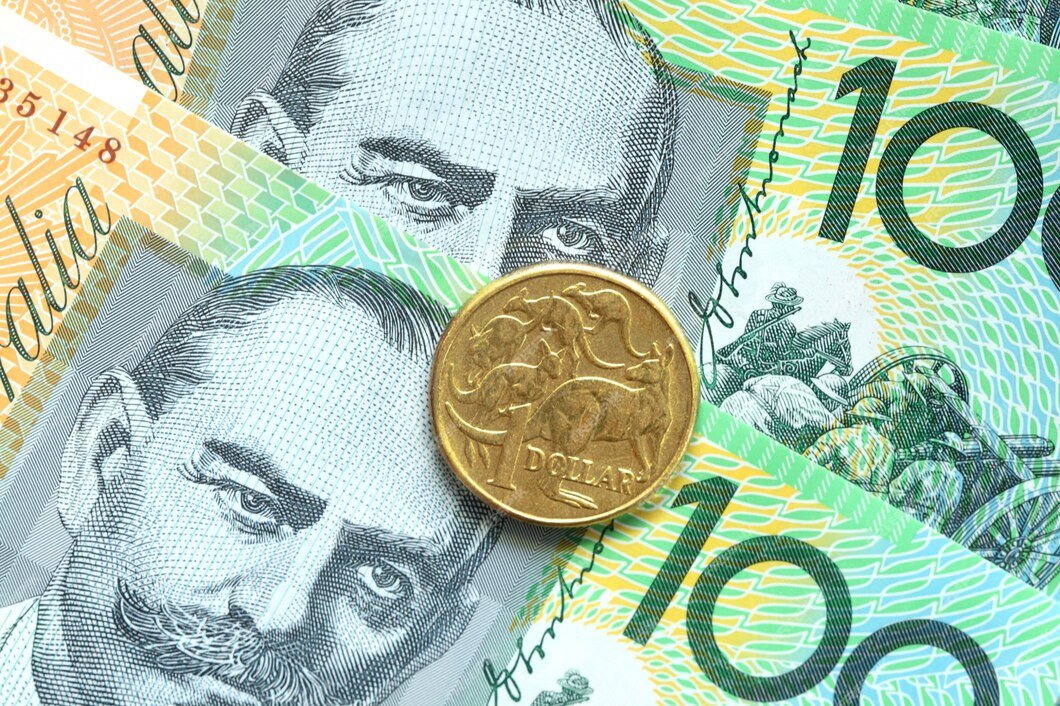Australian Dollar Fails to Maintain Gains as Subdued Trading and US-China Trade Tensions Mount
The Australian Dollar (AUD) was subdued on Friday despite positive signals from US President Donald Trump about the possibility of reaching a trade agreement with China that would be sealed within the next three to four weeks. While the AUD/USD currency pair had been on a seven-day winning streak, trading volumes were subdued on account of the Good Friday holiday, and worries regarding the economic effects of tariffs on the US kept the US Dollar under pressure. Even these events notwithstanding, the Reserve Bank of Australia’s conservative approach to future interest rate moves and mixed economic data, such as a marginal increase in Australia’s unemployment rate, dented the AUD’s performance. The duo is trading close to the psychological 0.6400 mark, as market players anxiously await developments in further trade talks and signs of global economics. KEY LOOKOUTS • Market players will keenly watch any advancement in the US-China trade talks, especially if a trade pact in the coming three to four weeks is imminent, as it would have a bearing on the AUD, given Australia’s healthy trade relationship with China. • US Consumer Price Index (CPI) data and labor market indicators, such as jobless claims, will be instrumental in determining the direction of the US Dollar. Better-than-anticipated data might favor the USD, which may cap AUD gains. • Reserve Bank of Australia’s conservative stance towards interest rate actions and its evaluation of economic uncertainties will be instrumental for AUD movements. The rate of future rate cuts, if any, and their size might affect investor attitudes towards the currency. • Being Australia’s biggest trading partner, China’s economic performance—e.g., GDP growth, industrial production, and retail sales—will keep influencing the AUD, especially with the recent optimistic growth in China’s economy surpassing expectations. The Australian Dollar (AUD) was downbeat on Friday despite encouraging news from US President Donald Trump regarding the possibility of a trade agreement with China within the next few weeks. Trading was generally subdued on account of the Good Friday holiday, with market players monitoring the on-going US-China trade talks and their possible influence on the global economy. Though the AUD had been on a seven-day rising streak, the Reserve Bank of Australia’s cautious approach to interest rate hikes and mixed economic indicators, such as a marginal increase in unemployment, kept its performance subdued. The AUD/USD currency pair is trading around the psychological level of 0.6400, and the direction is still unclear as market participants wait for further news in both international trade negotiations and local economic indicators. The Australian Dollar (AUD) was subdued despite hope from US-China trade negotiations, with market activity slowed down by the Good Friday holiday. The AUD/USD currency pair fluctuates around the 0.6400 level, confronted by conflicting economic indicators and ambiguity both from world trade negotiations and local statistics. • The Australian Dollar (AUD) remained sedate despite encouraging news from US President Donald Trump on US-China trade negotiations. • The trading activity was muted by the Good Friday holiday, diminishing volatility in the markets. • Trump remained hopeful that the United States and China could reach a trade agreement within three to four weeks, something that could impact the AUD. • The US Dollar (USD) was weakening with fears over the economic effects of tariffs and inflation risks. • The latest minutes of the Reserve Bank of Australia reflected continued uncertainty regarding interest rate changes in the future. • The unemployment rate of Australia increased marginally to 4.1%, while employment change was below expectations, which further created uncertainty regarding the AUD. • The AUD/USD currency pair is around 0.6400, with important resistance at 0.6408 and support at 0.6311, reflecting likely price action. The Australian Dollar (AUD) registered minimal movement despite a positive comment by US President Donald Trump regarding the possibility of a trade agreement with China. Trump was optimistic that a trade deal would be reached within the next three to four weeks, which increased expectations of a positive effect on global trade. Nevertheless, market activity was quiet because of the Good Friday holiday, which decreased trading volumes and volatility. AUD/USD DAILY PRICE CHART CHART SOURCE: TradingView Against these events, the Reserve Bank of Australia (RBA) adopted a prudent view regarding the nation’s economic scenario. Although recent economic statistics reported varied results, including a modest rise in the jobless rate and less-than-anticipated change in employment, the RBA reiterated uncertainty over upcoming interest rate decisions. Consequently, the performance of the AUD continued to come under stress, as traders keenly observed global trade talks along with domestic economic readings. TECHNICAL ANALYSIS Australian Dollar (AUD) against the United States Dollar (USD) is exhibiting a bullish inclination, with the AUD/USD pair trading above its nine-day Exponential Moving Average (EMA) and the 14-day Relative Strength Index (RSI) remaining above the neutral 50 level. These signals indicate positive short-term upward momentum. Yet, the pair is confronted with crucial resistance around the psychological 0.6400 level, with additional hurdles at the four-month high of 0.6408. On the negative side, the nine-day EMA at 0.6311 and the 50-day EMA at about 0.6283 serve as immediate support levels, which may assist the pair in holding its present range unless there is a major break below these levels, which may indicate a change in market sentiment. FORECAST The Australian Dollar (AUD) may experience upward momentum if US-China trade negotiations move in a positive direction. Any major breakthrough in the trade deal, as suggested by US President Trump, would be a positive boost for global sentiment and Australia’s economy, given its robust trade relationship with China. Also, if the Reserve Bank of Australia (RBA) delays rate cuts, it would bring some stability to the AUD. Better-than-expected economic reports in Australia, like firm employment numbers or a decrease in the rate of unemployment, may also continue to boost the currency’s potential for gains. Downside threats to AUD come from overall global uncertainties, especially if US-China trade talks breakdown or do not yield an agreement. Deteriorating US Dollar, as a result of persistent inflation and economic issues, could








